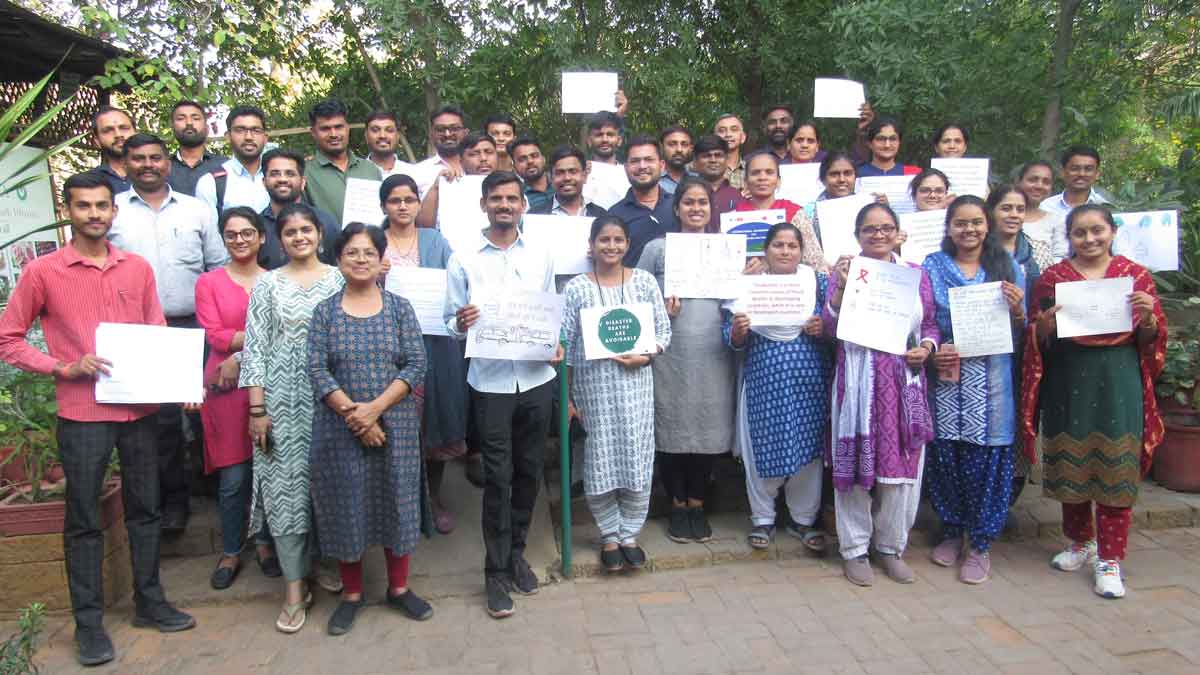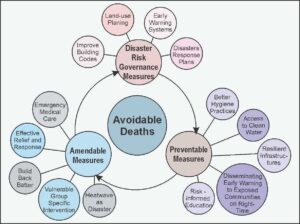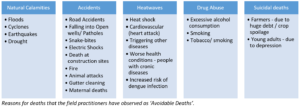
By Vishal Pathak, AIDMI, India

Preventable deaths refer to fatalities that could have been prevented through public health and education and related governance measures targeting various factors influencing health, behavior, lifestyle, socioeconomic status, and the environment. The number of accidental deaths in India reached 4.3 lakh in 2022, the highest in five years (according to the NCRB[1]). Road and rail traffic crashes accounted for 46% of these fatalities, followed by drowning, falls, and poisoning. 4.2 lakh deaths were due to preventable causes.
Unnatural mortality in India was found to make up 10.3% of total deaths and was greater among the population aged 10 to 45 years. The unnatural mortality rate in India was 0.67 per 1000 population: 0.84 per 1000 among the male population and 0.49 per 1000 among the female population[2]. Recently, AIDMI designed and conducted several actions in the month of March 2024 to celebrate International Awareness Day for Avoidable Deaths’. AIDMI reached out to over 50 practitioners working in eighteen districts of three states of India. A dedicated workshop on the theme ‘Disaster Deaths Are Avoidable’ was designed and conducted. The communication team contacted many individuals and organizations to build engagement on the avoidable deaths. A special focus has been given to ‘heatwave deaths are avoidable.’ In the first week of March, we organized an internal meeting that built the conceptual thematic understanding and role of the organization and stakeholders and the plan of action for the month. As a way ahead, ADN (Avoidable Death Network) and AIDMI developed a special issue of Southasiadisasters.net titled ‘Heatwave Deaths Are Avoidable.’
Teamwork with district practitioners who work with rural communities (including women farmers, children, teachers, family businesses, local institutions—milk cooperatives, panchayats, Anganwadi workers, SHGs, and farmer’s groups) resulted in recognition of avoidable deaths, coverage of indirect disaster deaths and identification of cause and possible local actions to solve the issue.
The 50 practitioners working in 18 districts agree to raise the visibility of disaster deaths, including indirect deaths, highlight the causes and circumstances that lead to deaths locally, and understand the context of interventions to avoid such deaths. The above table shows key reasons for deaths that practitioners found avoidable.
Heatwaves have been identified as a major factor leading to numerous deaths, yet they are not often directly linked to the causes of death. As a result, they have not garnered as much attention in mainstream discussions on avoidable deaths. Ms. Ashwini Mali, the field coordinator from Maharashtra state, said we must recognize that understanding indirect death is crucial to building consciousness for improved decision-making and development efforts.
Climate change has already led to more severe heatwaves in India and beyond. The difference in temperature between the hottest and coolest parts of cities or districts is not nominal. Planting trees can make a big difference in reducing heat in areas. Air pollution can further harm people who are at risk from the heat. Greener areas support the fight against heat waves and air pollution. Whether urban or rural, development without the provision of green space exacerbates temperature increases within our areas and exposes people, especially children, senior citizens, and people involved in businesses and services, to deadly heatwaves. We must have a mandatory process to increase green cover, said Ms. Nayna Parkara, a Field Practitioner from the Saurashtra region.

Two aspects are essential to promoting and strengthening practices to deal with heat waves—first, greater fuel efficiency reduces carbon pollution and other pollutants that damage the lungs, hearts, and brains. Second, greener places, whitewashing roofs, and using solar energy make a big difference for people living there. These two aspects not only support reducing costs but also reduce the chances of deadly diseases we are witnessing on an increasing scale.
To recognize and reduce the number of ‘avoidable deaths’, a framework has been suggested to focus on three measures – governance, preventable, and amendable. Practitioners reflected on types of actions that can support the reduce the number of such deaths.
[1] National Crime Records Bureau (NCRB), www.ncrb.gov.in.
[2] Basant Kumar Panda, Udaya S Mishra, (2020), Unnatural Deaths in India, https://pubmed.ncbi.nlm.nih.gov/32398177/#:~:text=Unnatural%20mortality%20in%20India%20was,1000%20among%20the%20female%20population.
Disclaimer: The views expressed in this piece are those of the author/s and do not necessarily reflect the views or policies of AIDMI.